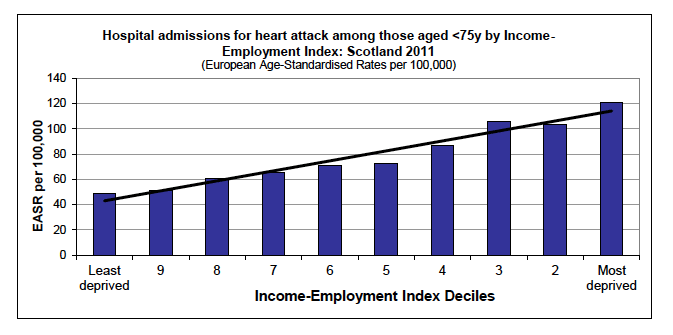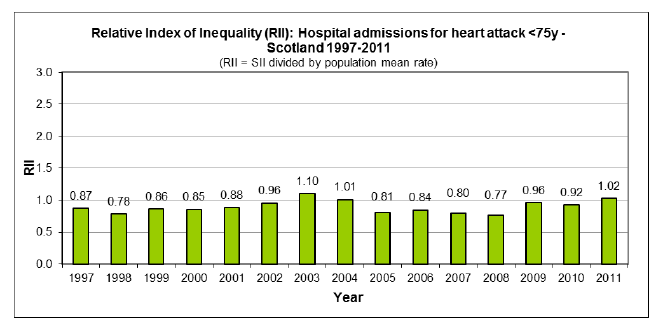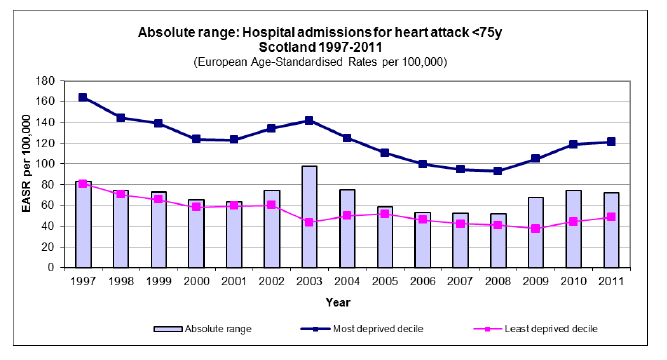Long-term Monitoring of Health Inequalities: Headline Indicators - October 2013
Annual update of the 'Long-term Monitoring of Health Inequalities' headline indicators.
This document is part of a collection
Coronary Heart Disease - first ever hospital admission for heart attack aged under 75 years
Summary
- Over time, inequalities have fluctuated in both absolute and relative terms, with a general upward trend since 2008.
More than 4,500 new cases of heart attack (aged under 75 years) were admitted to hospital in 2011. Since 1997, the rate of admissions has fallen by 30%. However, the recent trend has been increasing again after admissions reached their lowest level in 2007.
The admissions rate is approximately two and a half times higher in the most deprived areas compared to the least deprived areas (121.1 compared to 48.8 cases per 100,000 population, in 2011). Both relative and absolute inequalities fell between 2003 and 2008. Since then, as the admissions rate in the most deprived areas has increased at a faster rate than in the least deprived areas, relative and absolute inequalities have increased.
Inequalities gradient in the most recent year available

Relative Index of Inequality (RII) over time

Absolute range over time

Scale / context
| Number of new cases |
Target population size |
Rate per 100,000 (EASR) |
|
|---|---|---|---|
| 1997 |
5,765 |
4,740,269 |
110.9 |
| 1998 |
5,676 |
4,729,975 |
108.3 |
| 1999 |
5,102 |
4,721,298 |
97.0 |
| 2000 |
4,812 |
4,708,667 |
90.7 |
| 2001 |
4,776 |
4,703,661 |
89.6 |
| 2002 |
4,833 |
4,690,508 |
89.6 |
| 2003 |
4,569 |
4,690,603 |
84.0 |
| 2004 |
4,413 |
4,706,922 |
80.5 |
| 2005 |
4,054 |
4,718,403 |
73.2 |
| 2006 |
3,817 |
4,734,676 |
68.6 |
| 2007 |
3,624 |
4,755,963 |
64.5 |
| 2008 |
3,733 |
4,775,321 |
65.8 |
| 2009 |
3,857 |
4,795,479 |
67.1 |
| 2010 |
4,368 |
4,816,465 |
75.3 |
| 2011 |
4,535 |
4,841,726 |
77.5 |
Contact
Email: Craig Kellock
There is a problem
Thanks for your feedback